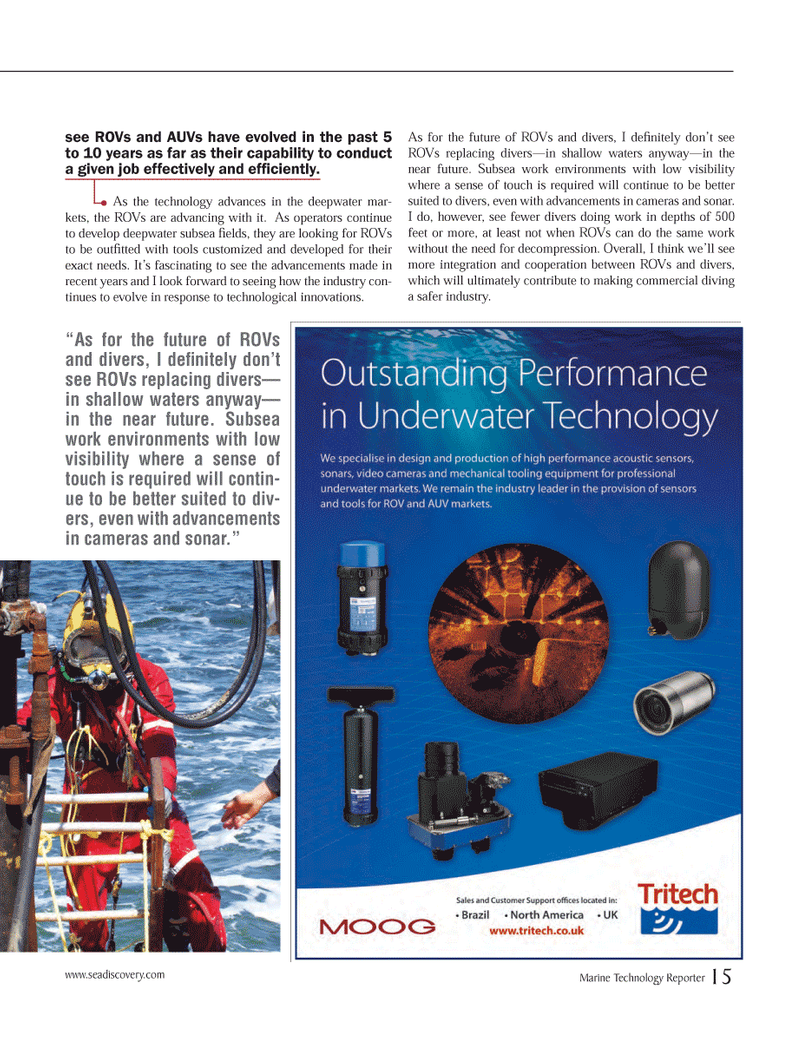
Page 15: of Marine Technology Magazine (November 2012)
Fresh Water Monitoring & Sensors
Read this page in Pdf, Flash or Html5 edition of November 2012 Marine Technology Magazine
see ROVs and AUVs have evolved in the past 5 to 10 years as far as their capability to conduct a given job effectively and ef Þ ciently. As the technology advances in the deepwater mar- kets, the ROVs are advancing with it. As operators continue to develop deepwater subsea Þ elds, they are looking for ROVs to be outÞ tted with tools customized and developed for their exact needs. ItÕs fascinating to see the advancements made in recent years and I look forward to seeing how the industry con- tinues to evolve in response to technological innovations. As for the future of ROVs and divers, I deÞ nitely donÕt see ROVs replacing diversÑin shallow waters anywayÑin the near future. Subsea work environments with low visibility where a sense of touch is required will continue to be better suited to divers, even with advancements in cameras and sonar. I do, however, see fewer divers doing work in depths of 500 feet or more, at least not when ROVs can do the same work without the need for decompression. Overall, I think weÕll see more integration and cooperation between ROVs and divers, which will ultimately contribute to making commercial diving a safer industry. ?As for the future of ROVs and divers, I de nitely don?t see ROVs replacing divers?in shallow waters anyway?in the near future. Subsea work environments with low visibility where a sense of touch is required will contin-ue to be better suited to div-ers, even with advancements in cameras and sonar.? Marine Technology Reporter 15www.seadiscovery.com MTR #9 (1-17).indd 15MTR #9 (1-17).indd 1512/4/2012 12:49:15 PM12/4/2012 12:49:15 PM

 14
14

 16
16
